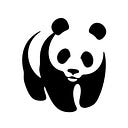By Patricia Schelle, Knowledge Manager, WWF Freshwater Practice
A clear day in August: I find myself high in the skies above the Netherlands on my way to Stockholm. It is easy to pick out the features of the ‘Afsluitdijk’ — the 32 km long dam and causeway, built for flood protection, that turned the Zuiderzee from a dynamic salt-water inlet into the freshwater IJsselmeer. Earlier this year, renovations started to strengthen the dam, but also to create a permanent new connection for migratory fish such as salmon and eel.
The creation of this ‘Fish Migration River’ is a sign of how far understanding of the vital need for connectivity has come in recent years.
I am not the only person heading to Sweden. In fact, over three thousand water professionals will be in Stockholm for the 29th World Water Week, a firm fixture on the international water calendar. In terms of freshwater connectivity (other than fish) there isn’t an event quite like it! Yet, as much as I enjoy tracking the landscape beneath me, ‘Flygskam’, or ‘flight shame’ travels with me — even though this is a short trip for me and all my carbon is being offset.
WWF’s success in conserving nature and supporting society depends on our people, their skills, drive and experience. As Knowledge Manager for the WWF global Freshwater network I connect a community of over 400 people, facilitate learning exchanges and support capacity development across the world. Meetings, field visits, training events and conferences are part and parcel of this process — but as we rapidly tip into a climate emergency, WWF is adjusting its way of working and connecting.
Since 2011, WWF has invested in leadership training for freshwater talent, focusing on personal skills development, leadership and change management — skills that are all relevant whether working with fishing communities on the shores of Lake Nyassa (aka Lake Malawi), developing water strategies with agroforestry business in South Africa or influencing government energy policy to keep Zambian rivers free flowing.
This year we are transforming this programme — which used to involve 3 rounds of travel — into a largely online experience. Hailing from almost all corners of Africa, this year’s team of six talented colleagues is at the core of an energetic movement of young freshwater professionals within WWF, calling themselves Freshies4Africa.
Making use of advanced video conferencing facilities, the team already has several all day workshops under their belt — covering much of the same content as the original programme. Virtual breakout rooms allow people to connect in small groups for guided discussions and assignments and an agreed meeting protocol means participants and trainers are all able to connect, interact and communicate: all it takes is a little more thought on body language and online etiquette.
Still, people are social creatures and nothing quite replaces live connections. So instead of three training events, the programme now runs just a single trip, combining skills training with participation in World Water Week. So even as I descend towards Stockholm, ‘Flygskam’ and all, I take comfort in the fact that this new approach is reducing the carbon footprint of the programme by more than 50%.
As I write, Water Week is still in full swing and I have returned home, following events in Stockholm closely as the team works out loud on Twitter and our internal communication channels — alerting the wider community to the latest trends and developments. The next time I will ‘see’ the team, will be in our online meeting room for our final workshops — adopting smiles, nods, and judicious use of the thumbs-up sign to show each other we’re present, active and engaged.
Looking back to the Afsluitdijk I see parallels: fish and people thrive on connectivity and connections. But sometimes the opportunity for that direct connection is reduced — for flood protection in the case of fish, and for carbon reduction in the case of conservation staff. Virtual collaboration is a bit like the Fish Migration River — a way of restoring connectivity. It’s not perfect, not as social, maybe not as much fun as the ideal world — but in times like these, making the most of technology is a compromise we will have adopt and own as an organisation.
